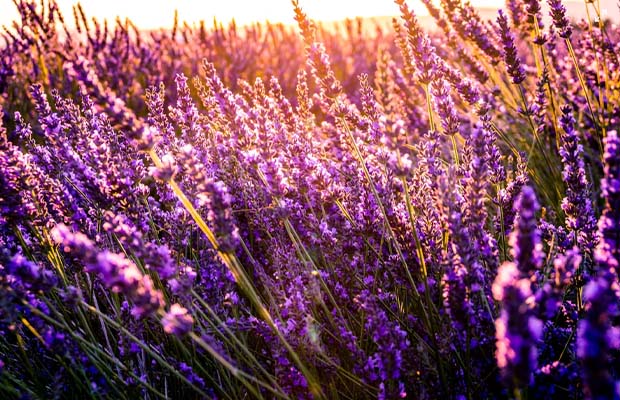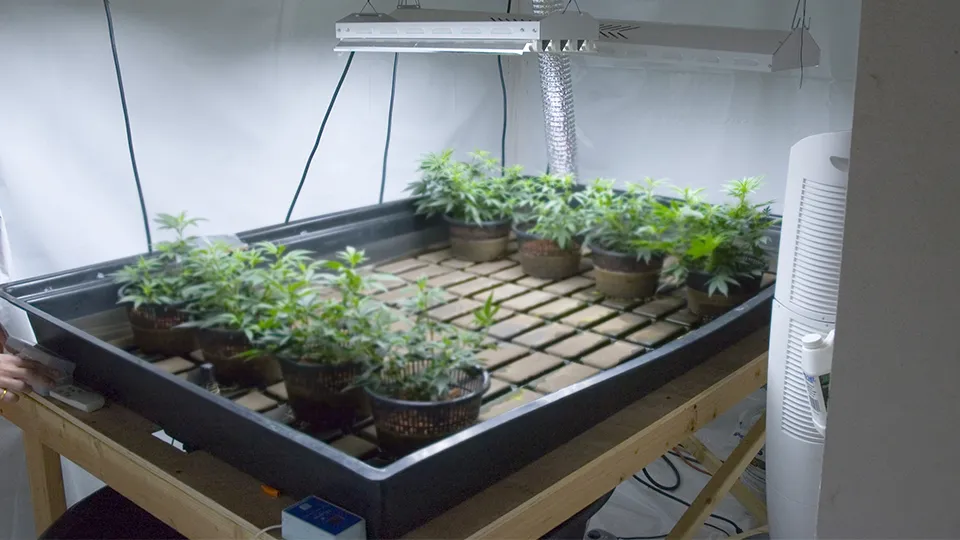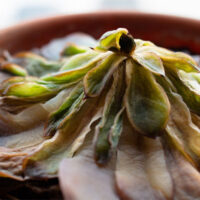Not quite sure does lavender need full sun? Lavender plants thrive in full sunlight and are not very happy in the shade. Wane to keep your lavender healthy and blooming, you are in the right place!
Depending on the type you grow, lavender can be difficult. They need at least 6 hours of direct sunlight per day, ideally 8-10 hours during the growing season.
Lavender will grow better and stronger and produce more blooms if it is planted in full sun. Keep reading to learn more about lavender sun care.
Does Lavender Need Full Sun?
Lavender is native to the dry, sunny slopes of the Mediterranean where it enjoys full direct sunshine for 6-8 months of the year. These dry coastal areas have rocky soils, a lot of sunshine, hot summers, and mild winters.
This fragrant herb grows at higher elevations with more direct sun exposure in its natural habitat. It absolutely detests sitting in wet or waterlogged soil and prefers to be as dry as possible. The need for sunlight in lavender is similar to that of a person addicted to tanning beds.
The spring and summer seasons are the most important times for lavender to receive full sunlight. It will unquestionably require full sun exposure all year round if it stays evergreen in your climate (growing zones 7–10).
It won’t require as much sunlight during its dormancy if you are growing in a cooler environment (zones 4-6) or in a container. Many container gardeners actually bring lavender into a cool, well-ventilated indoor space during the winter, such as a covered porch or south-facing window.
Also Read:
Why Lavender Needs Full Sun and Not Shade?
The main advantages of full sun are listed below.
Lavender Needs Full Sun for Fragrant Blooms
Growing lavender increases the likelihood that, in addition to the aesthetic appeal, you’ll occasionally want to inhale its sweet aroma. Moreover, from where does that fragrance originate? The blooms!
Guess what your lavender needs to produce those scented blooms, though? For the blooms to even start to grow, it must receive at least 6 to 8 hours per day of direct sunlight.

The amount of sunlight the flowers receive directly affects how much lavender oil is produced there. The fertility of the soil is another element at play. It might seem counterintuitive, but your lavender may be in overly fertile soil if it is growing in full sun but not producing fragrant blooms.
Overly fertile soil typically has excess nutrients like nitrogen. Lavender will turn yellow from too much nitrogen because it is getting too many nutrients and start to look leggy. Additionally, it will begin to produce fewer flowers.
In case we didn’t make it clear, the sun is the main concept. You should probably wear sun protection if you are taking care of your lavender during the day.
Related: When Does Lavender Bloom?
Lavender Needs Full Sun to Control Soil Moisture Content
Long-term soaking in wet soil is not something lavender can tolerate. This usually becomes a problem if the soil is not well-draining and gets little sun. Various diseases result from this, especially if the water has nowhere to go.
Additionally, overwatering is a major issue and is very typical with most plants.
If you’ve ever taken care of ornamental plants, flowers, or vegetables in your garden, you’ve likely heard of conditions like powdery mildew and root rot. They don’t stand out, though! Without the sun to evaporate excess moisture from the soil, lavender is particularly vulnerable.
The result will be that your lavender plant will suffer if you have shade and poorly draining soil. There may be browning of the entire plant, legginess, fewer blooms, yellowing, and wilting.
Shade Increases the Chance of Pathogens in Lavender
The next item on our list—lavender ailments—may have already been guessed.
- Lavender plant leaves will exhibit symptoms of the fungus powdery mildew. This fungus has the exact appearance described by its name and thrives in warm, humid environments.
- Overwatering, inadequate drainage, and waterlogged soil beneath lavender all contribute to root rot. Although indoor plants are more prone to this problem, lavender plants are also susceptible to it because they are picky about sitting in water. Your lavender will quickly go bad because of this.
- ‘Lavender stems are affected by a fungus condition called shab’-Phomopsis. Without the threat of drought, this may be the cause of every shoot starting to wilt.
- A soil-borne fungus called verticillium, which is associated with lavender, prefers warm, moist environments. NOT ONLY lavender is impacted by this; over 400 other plant species also are. It is challenging to control because it is a soil-borne disease. This pathogen affects the xylem vessels, which move water from the roots to the leaves.
- A phytopathogen called the alfalfa mosaic virus causes the yellowing, wilting, and curling of lavender leaves. Over 600 different plant species are impacted by this, which does not only affect lavender. This pathogen is spread by insects, primarily aphids, but it is also spread by seeds and pollen.
Growth of Lavender is Dependent on Full Sun
The amount of sunlight a plant receives directly affects how much it grows lavender. Your lavender will likely grow leggy and weak without 6 to 8 hours of daily full and direct sunlight, and you won’t get the full, dense appearance you may have anticipated.
The right environment for lavender cultivation can also guarantee a lush plant with lots of buds and blooms.
How Much Sunlight is Enough?
Lavender thrives best with 6 or more hours of direct sunlight, but 8-10 hours is ideal. Because dappled shade or the shadows reduce the chloroplasts’ ability to photosynthesize, unfiltered sunlight is especially crucial for lavender.
However, if you experience a few cloudy days, don’t worry. As long as lavender has nothing blocking its sunlight, it can still get by on about 3 hours of morning sun and 3 hours of afternoon sun.
Choose a variety like “Hidcote,” “Royal Velvet,” or Spanish lavender and widen the spacing if you reside in an area with frequent cloud cover (like the Pacific Northwest), as this will improve circulation.
Can Lavender Grow in Shade?
Lavender generally doesn’t do well in shaded environments. The plant might not instantly perish, but it might fail to produce its renowned purple flowers. If lavender does flower in the shade, the buds will either be smaller than usual or will fall off too soon, frequently before the season is over. Additionally, lavender that is grown in the shade is susceptible to root rot.
- Shade is not good for lavender, and the roots could rot.
- Even though the plant might survive for a while, its blooms won’t be spectacular.
- Smaller than usual petals and flower buds could open too soon.
- Without sunlight, lavender plants risk dying entirely.
Even though lavender can start growing in the shade, it rarely does so by the end of the summer. If given insufficient sunlight, lavender plants occasionally even wilt and die in the first few months. Planting your lavender in shade will help you avoid these issues.
Read More: Can You Grow Lavender Indoors?
Will Lavender Flower in Shade?
Although growing lavender in complete shade will result in utter failure, some varieties of lavender can tolerate more shade.
However, the full blooming period is compromised, and their growth will be stunted. Partial shade lavender cannot flower as much as lavender grown in full sun, and the fragrance is also less strong.
Growing lavender for its flowers and fragrance requires a sunny location with little to no shade.
What Happens If Lavender Doesn’t Get Enough Sun?
If it receives at least three hours of sunlight each day, lavender can still grow and flourish. Its aroma could be compromised, though, and blooms might not fully open. Root rot is a concern if plants are significantly sun-deprived. If the soil is poorly drained, this is especially true. Increase the amount of sunlight in humid environments to help the soil dry out more completely.
- If lavender doesn’t get enough sun, its flowers might be smaller.
- Lavender will produce less fragrant flowers if not given enough sunlight.
- Lavender grown in shade is susceptible to root rot.
- Keep your lavender in full sun if a robust plant with a potent scent is desired.
Related Reading: Smoking Lavender Pros And Cons
FAQs
Does Lavender Grow in the Shade?
Lavender is a plant that craves the sun. It vehemently detests shade and may even perish from a lack of sunlight. Due to its Mediterranean origins on the hot, exposed slopes of Europe, it has evolved to grow in at least 6 to 8 hours of direct sunlight daily.
Does Lavender Need a Lot of Sunlight?
Lavender demands at least 6 hours per day of direct sunlight, but prefers as much as possible. It typically despises shade and may experience diminished vigor, decreased flower production, and increased disease pressure if it doesn’t receive enough sunlight.
Does Lavender Need a Lot of Water?
Water once or twice a week after planting until plants are established. Water mature plants once or twice weekly until harvest, then every two to three weeks once buds form.
Does Lavender Come Back Every Year?
It is likely that they will return year after year for a decade or two. After a long winter of dormancy, however, even the toughest perennials can still appear quite grotesque.
Final Words
In conclusion, lavender must be planted in a location with full sun and at least six hours of sunlight each day.
Ideally, this area of the garden faces south and is not covered by any nearby trees or buildings.
Keep in mind that the shade tolerance is minimal and all varieties may suffer from reduced vigor or less flower production in these conditions. If you want to learn more about lavender, read our post on How to Propagate Lavender from Cuttings.

















